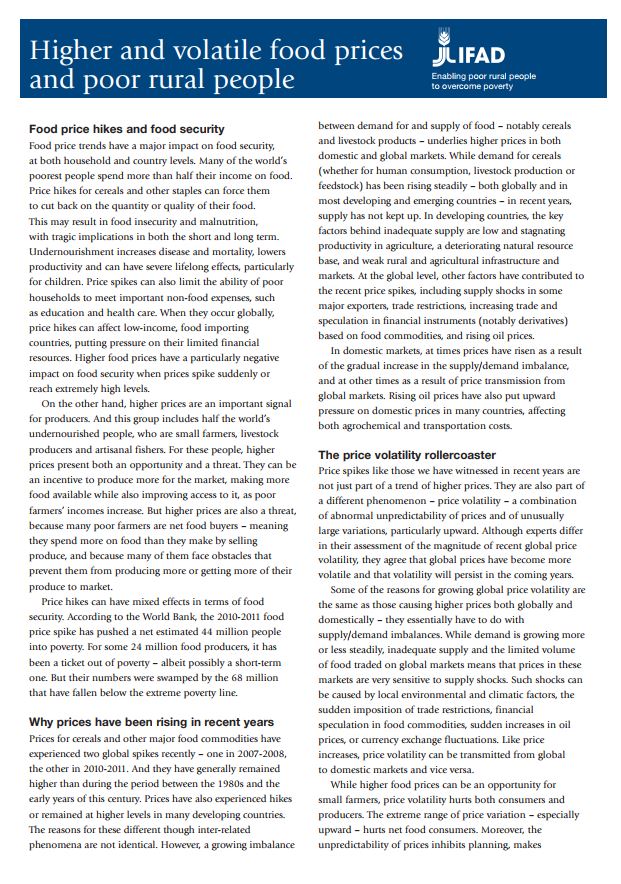Higher and volatile food prices and poor rural people
Higher and volatile food prices and poor rural people
June 2011
Food price trends have a major impact on food security, at both household and country levels. Many of the world’s poorest people spend more than half their income on food. Price hikes for cereals and other staples can force them to cut back on the quantity or quality of their food. This may result in food insecurity and malnutrition, with tragic implications in both the short and long term.
Undernourishment increases disease and mortality, lowers productivity and can have severe lifelong effects, particularly for children. Price spikes can also limit the ability of poor households to meet important non-food expenses, such as education and health care. When they occur globally, price hikes can affect low-income, food importing countries, putting pressure on their limited financial resources. Higher food prices have a particularly negative impact on food security when prices spike suddenly or reach extremely high levels.
Undernourishment increases disease and mortality, lowers productivity and can have severe lifelong effects, particularly for children. Price spikes can also limit the ability of poor households to meet important non-food expenses, such as education and health care. When they occur globally, price hikes can affect low-income, food importing countries, putting pressure on their limited financial resources. Higher food prices have a particularly negative impact on food security when prices spike suddenly or reach extremely high levels.
